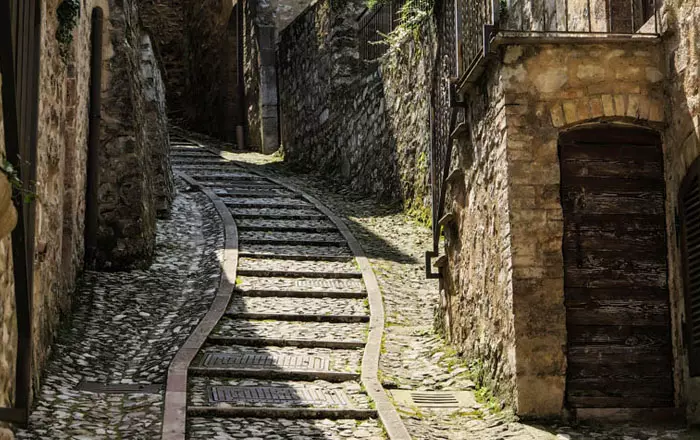
It brings 367 inhabitants on a hill in the opening of the Valnerina at an altitude of 333 m above sea level. It is included among the most beautiful villages in Italy and is ORANGE FLAG of the ITALIAN touring club, mutual friend of bees and CITY OF TRUFFLES.
Archaeological evidence supports the thesis of the existence of remote settlements attributable to the native populations of this valley as early as the 8th century BC
In the period between the 4th and 2nd century BC, the historical era of Valdinarco began and the subsequent Romanization as evidenced by archaeological finds. Starting from 1177 Vallo DI NERA became a fiefdom of the GERMANICO DI SPOLETO CORRADO DI HURSLIGEN and in 1217 JACOPO CAPOCCI formally granted the inhabitants of Vallo di Nera possession of the Flezano hill and the right to build a castle there, in exchange for protection and defense by SPOLETO.
But Vallo di Nera, due to its characteristics as an important strategic point of control of the road, was bitterly contested between the state of the church and Spoleto which, in the 13th century, managed to conquer it. In 1860 it was established as a municipality and annexed to the Kingdom of ‘Italy.Vallo di Nera is entirely surrounded by walls and towers and preserves its medieval urban structure intact, with narrow alleys surmounted by arches. We remember the Franciscan church of Santa Maria which contains frescoes from the Giotto school including the famous ” Procession of the Whites” painted by Cola di Pietro da Camerino in 1401, and other interesting little churches rich in history. Furthermore, two valuable dovecote towers are visible which are located in the sixteenth-century Borgo dei Casali. A trekking circuit inside the historic center offers the visit to the ancient wood-fired ovens and a tour of the historical sources.
In the Palazzetto di Portella, one of the two entrance gates to the castle-town, you can visit the HOUSE OF RACCONTI. Documentation and collection center for oral literary heritage.
It is a place where trekking is popular both for the routes and the landscapes.
Obviously there is no shortage of typical local cuisine, the interesting LA TAVERNA DEL BORDONE restaurant offers strictly home-made cuisine.
